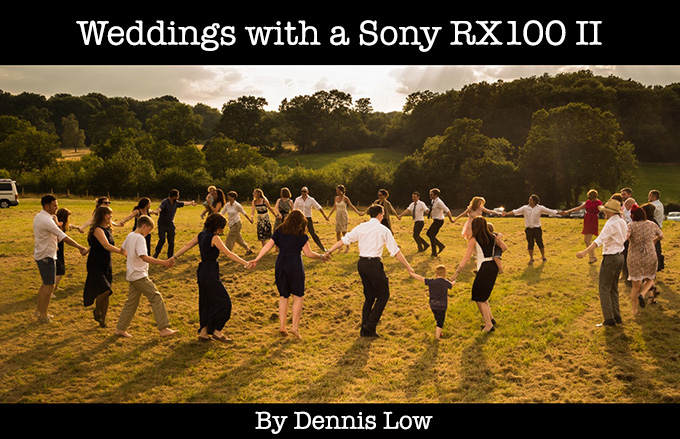
Wedding photography with a Sony RX100II
By Dennis Low
There are lots of contradictions when it comes to how photographers think about their equipment. Street photographers, for instance, often value small cameras and we all know the reasons why: when cameras are small, they’re unobtrusive, discrete; unlike dSLRs, small cameras look ‘friendly’ and ‘unthreatening’ which puts people at ease, should they even spot them at all. The ever-ready small camera is perfect for shooting the world unawares, capturing the moment as it happens.
All of this makes perfect, logical sense – until, that is, someone asks you to photograph their wedding. Now, you’d think wedding photographers, with everyone wanting candid, documentary, fly-on-the-wall imagery, would have a lot in common with street photographers, and that small cameras would be absolutely central to the wedding photography industry. Nothing could be further from the truth. In fact, if you’re looking for a wedding photographer, you’d be hard-pressed to find one who *isn’t* wielding, say, a couple of Canon 5D MK III bodies, 24-70mm f2.8 and 70-200mm f2.8 zooms, maybe with a couple of fast aperture primes to boot, or an outfit that’s very, very similar. With every guest at the wedding taking photographs already, the official photographer, it seems, needs to have equipment that’s bigger, better, and more expensive than everyone else’s – otherwise, what’s the point of hiring a photographer at all?
But surely it’s the photographer rather than the kit that matters, right? Yet, if that was the case, how come you never hear about wedding photographers using the pocket digicams favoured by many street photographers? and what would wedding photography look like if they did?
I spend most of my time developing my fine art practice and trying to find new ways of photographing animals but, last month, I was asked to photograph two weddings (consecutive weekends!). On both occasions, I was asked for candid, documentary-style shots, and instructed to ‘blend in’ and basically not get in the way.
That in mind, I had a think about how I was going to work: I wanted to be free to weave in and out between groups of guests, unencumbered by a huge, heavy bag; I wanted guests I’d never met to not even flinch when I stood next to them and took their picture. Visually, I wanted images that my clients could pore over in years to come, ones that reveal every detail of their wedding days rather than hide them in a gorgeous, creamy blur of expensive, full-frame bokeh at f1.4. (Those classy-looking, ambient light shots where nothing’s in focus except the bride’s left eye, or the groom’s new wedding ring, are actually pretty easy to do, but they don’t actually tell you a lot about the day, where they were taken, or when.) I wanted my photos to sidestep all those old wedding conventions and, instead, somehow tune into the language of the normal, everyday photography that everyone knows and understands, like the stuff you see all the time on Facebook or Instagram. But supercharged, obviously 🙂
It became increasingly apparent that the tiny size and huge depth of field of small sensor cameras were just what I needed. So, I took a deep breath, resisted all things dSLR, left my Leica M9 at home, and packed a little satchel with a Sony RX100II, together with a couple of flashes on remote triggers.
What does a digicam wedding look like? can it ever look professional, and is it something you’d ever try to do? Take a look and decide for yourself!
Dennis Low

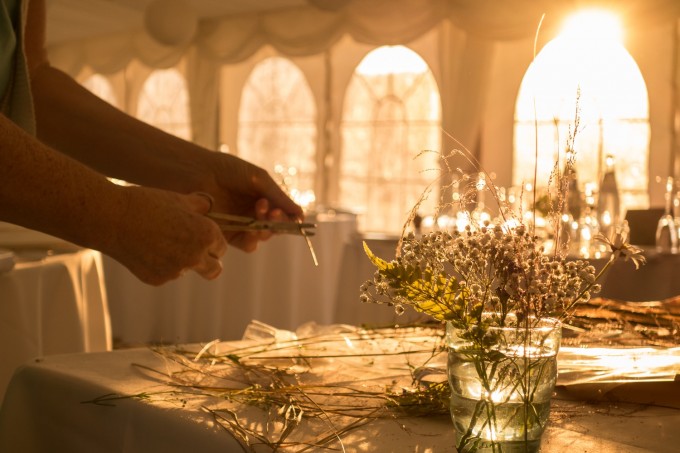
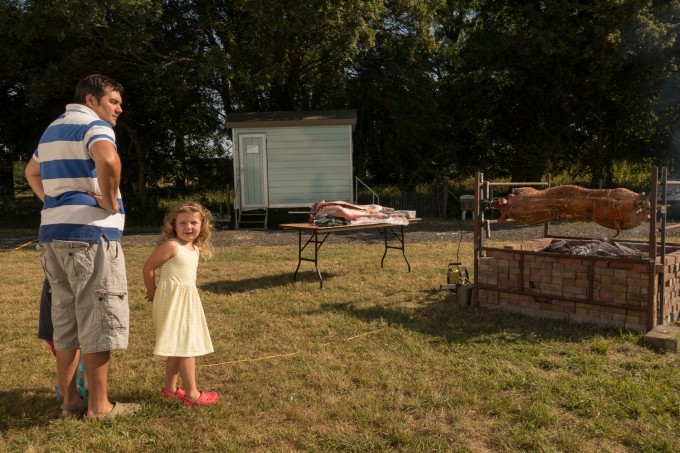
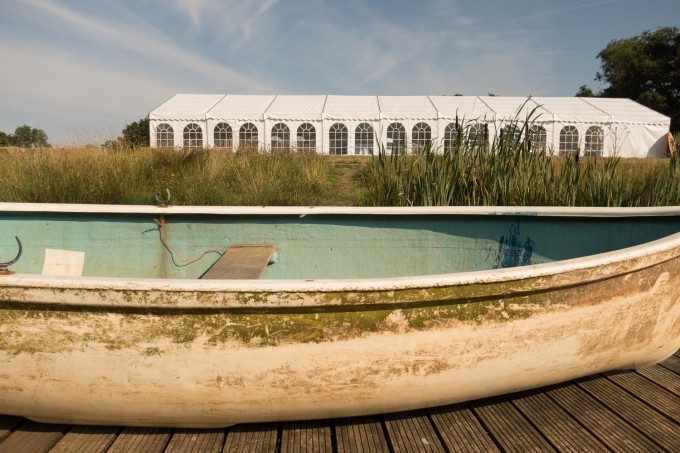
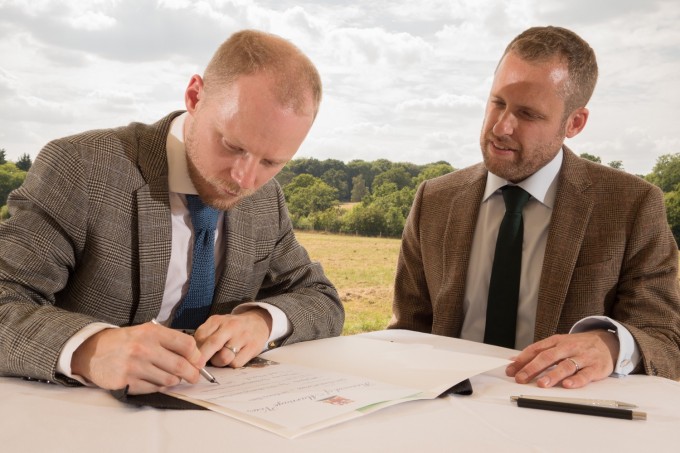
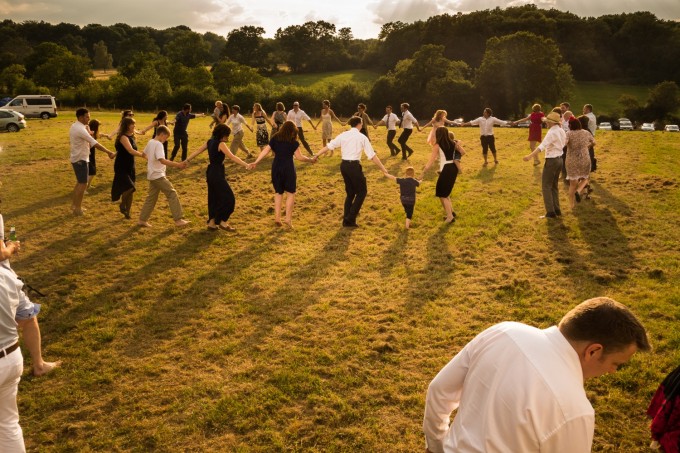
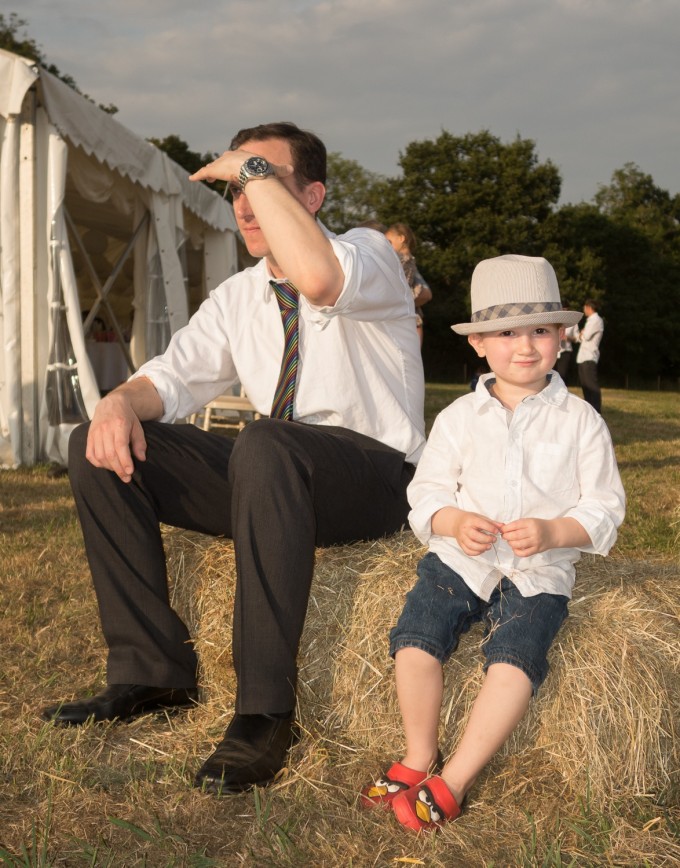
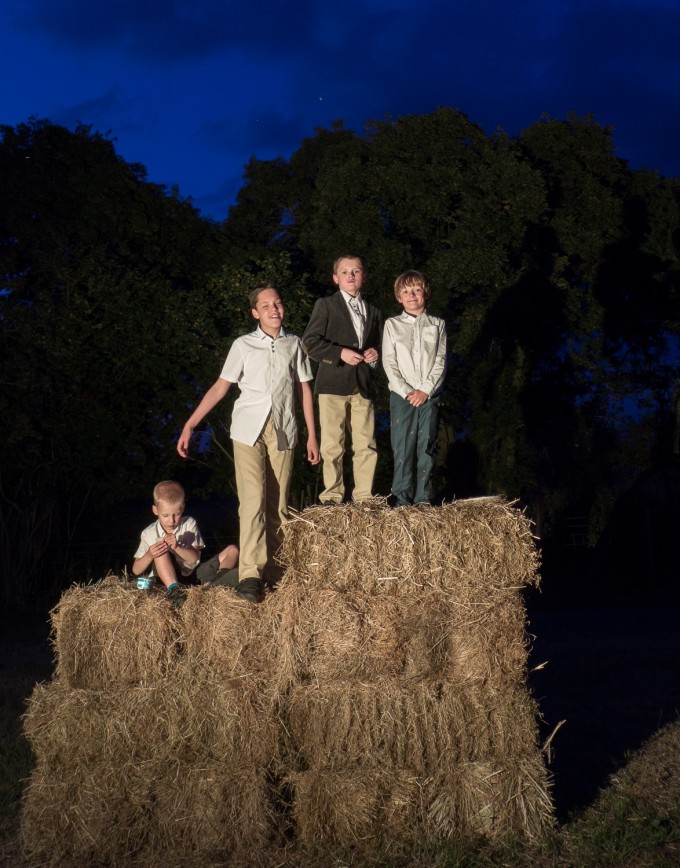
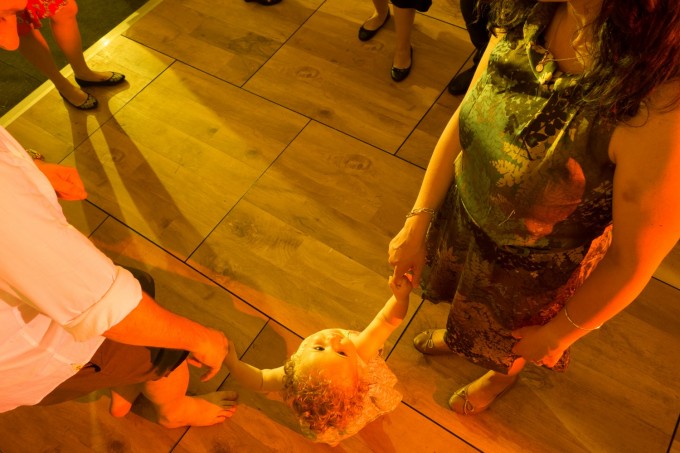
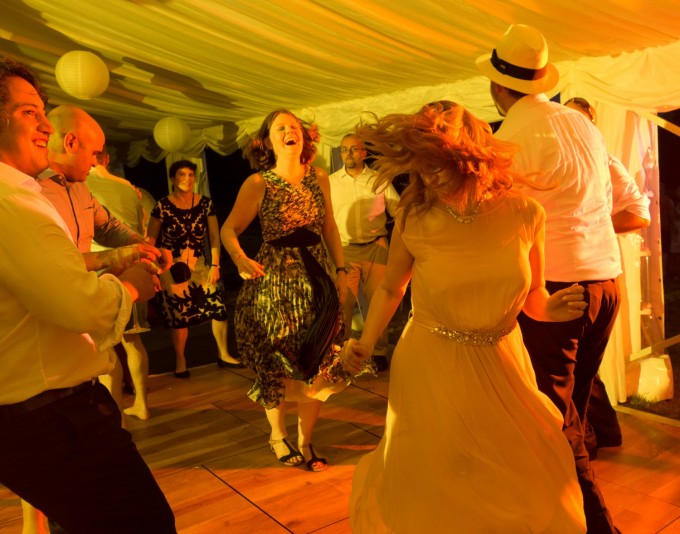
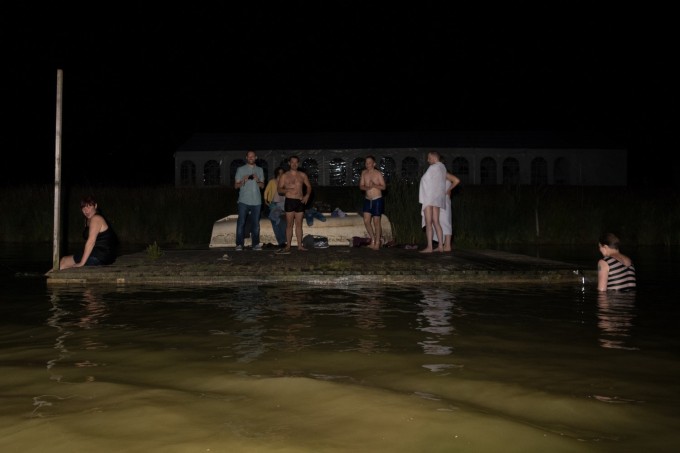
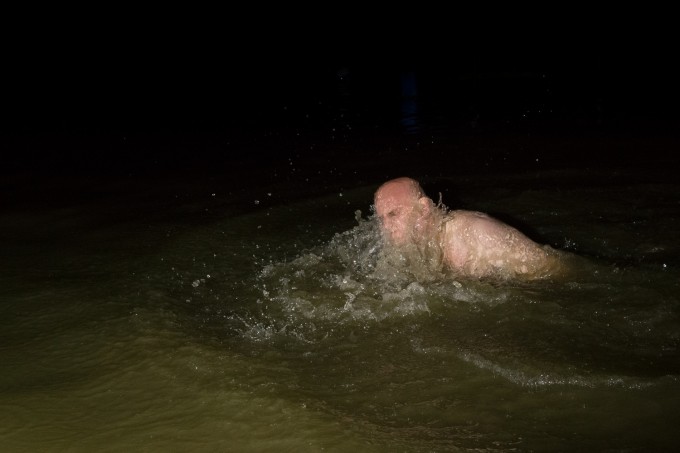
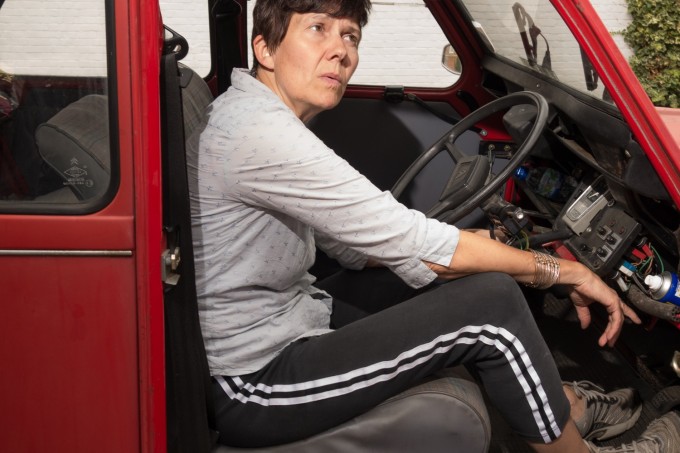
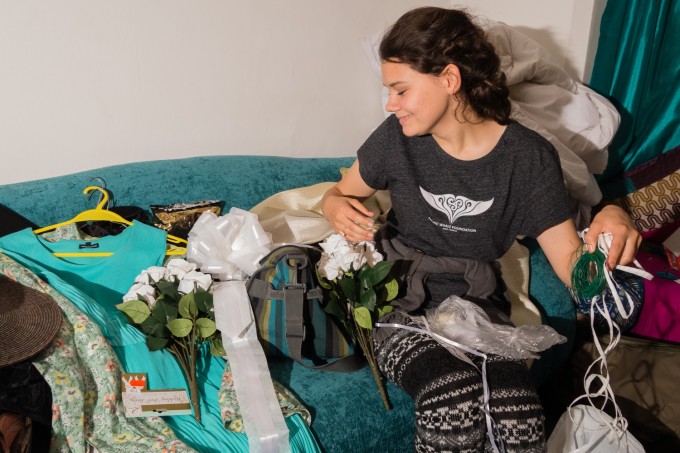
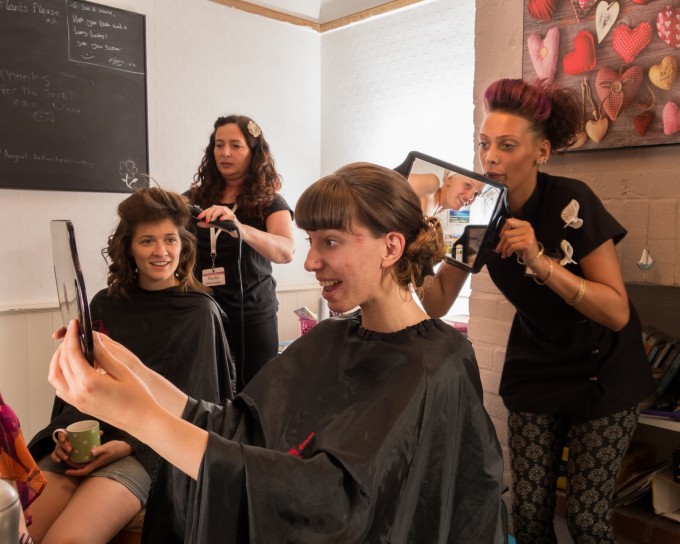
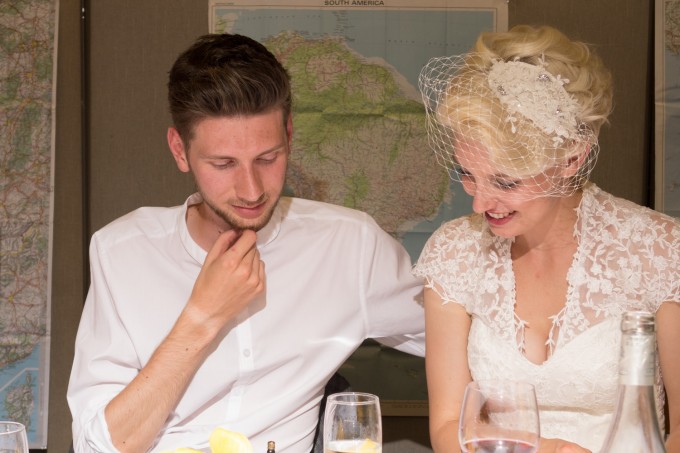
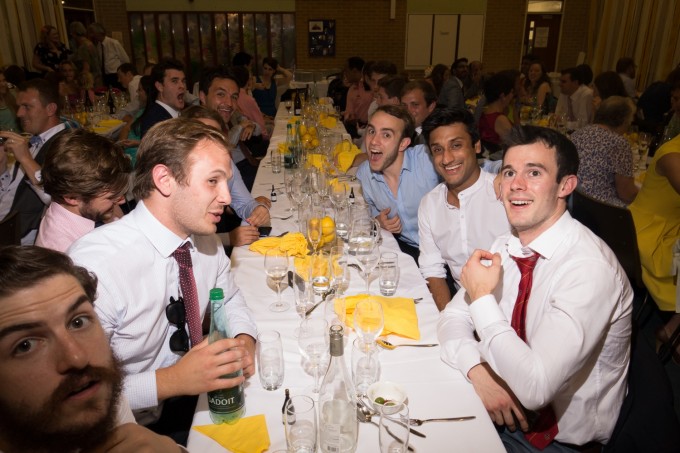
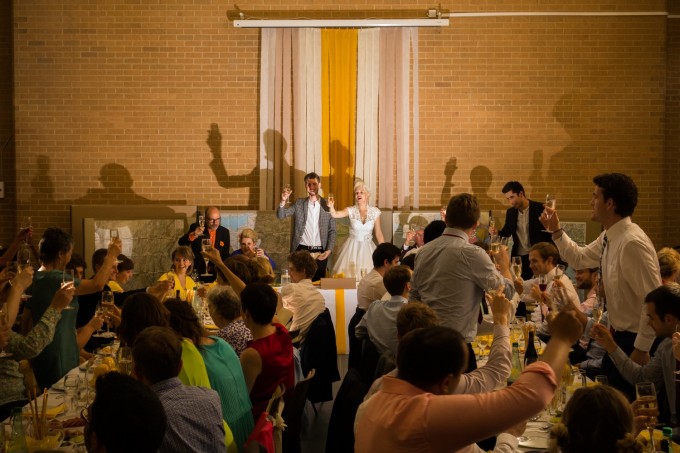
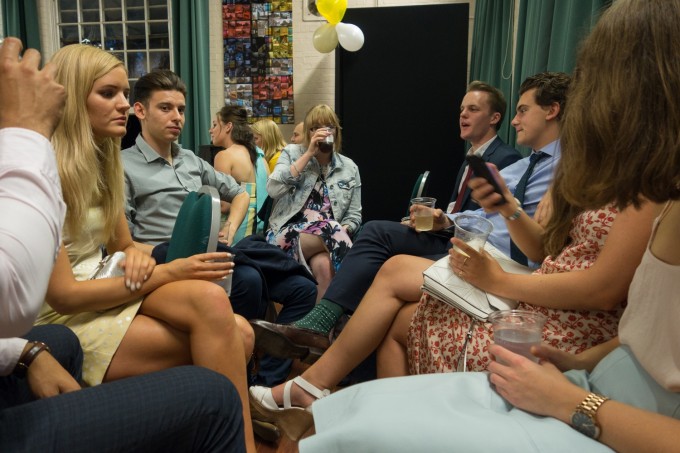
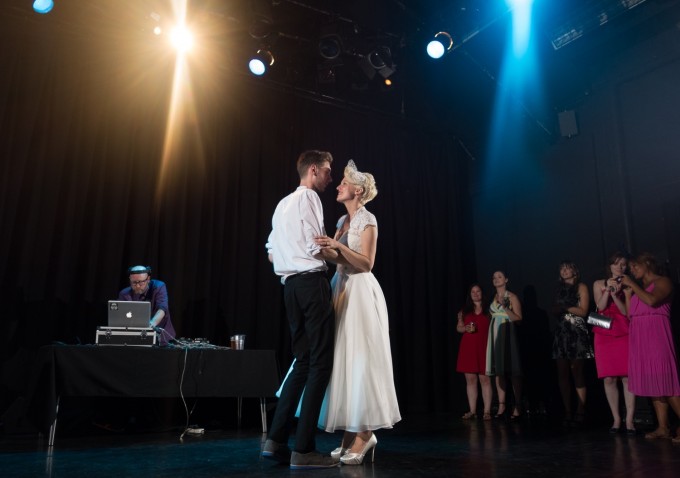
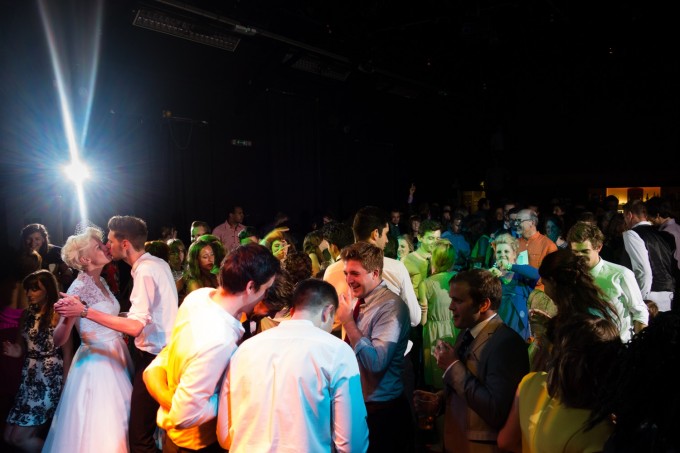
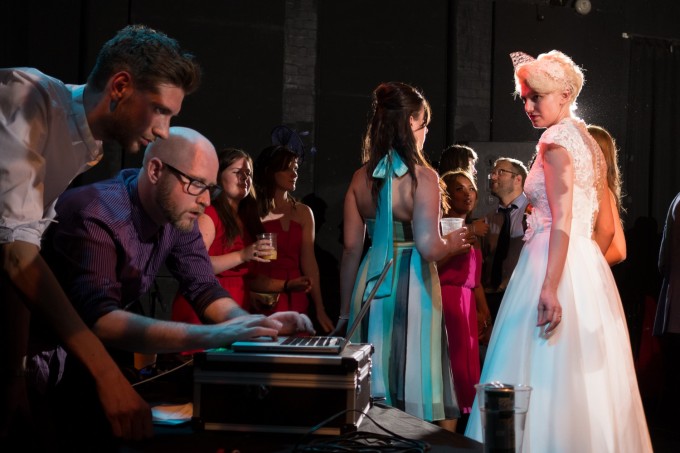


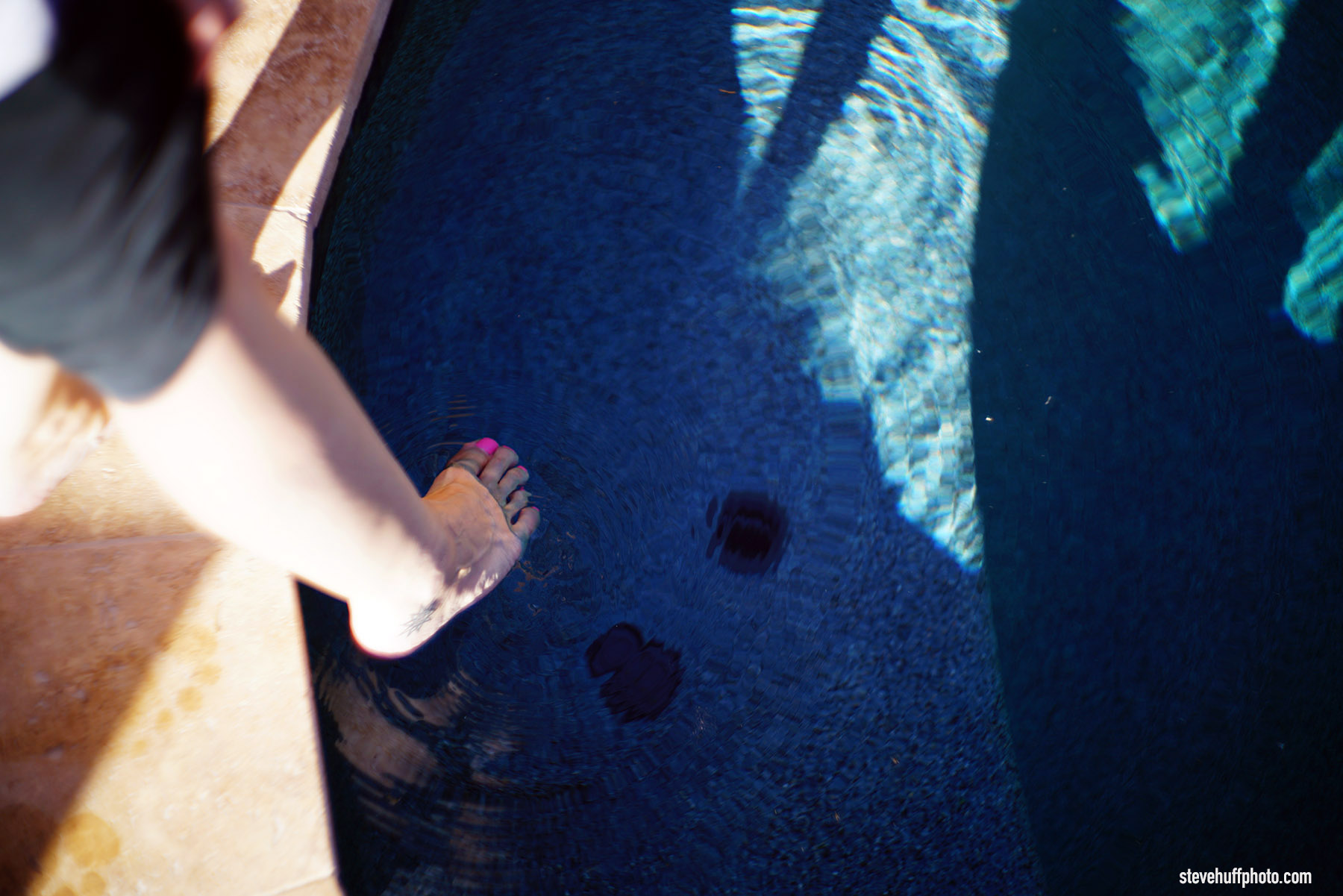
Absolutely dreadful photos. I hope the client did not pay for these. The composition is poor, and there is no timing whatsoever to catch that magic moment. Look at any competent professional wedding photographer’s website and the difference is immediately clear.
I admire your bravery! However, I don’t think this camera was ever designed to photograph weddings on a professional level.
very nice photos
Well done Dennis… Lot of wankers out there. You achieved what you set out to achieve. You weren’t selling the “wedding photography myth”
How come the photos are either small, in-line, or too big to view without panning around?
These are interesting. My first reaction was that some of them look more like snapshots than what I think of as the “documentary look” popular in a lot of wedding photography. Then I went back and looked again, and they’re clearly more than snapshots (it’s mostly the DOF that gives me that impression); rather, they look more like photos taken by a street photographer, or some of the true, gritty documentary stuff I’ve seen (as opposed to “documentary style” wedding photography). The big question, of course, is whether the client likes it. Personally, I wouldn’t want those photos as my wedding photos, but I could easily see photos like that in a documentary article in a magazine. Honestly, they kind of look like a Nat’l Geographic story 🙂 The camera seems appropriate for what you’ve done, but I don’t think too many wedding photographers will be in a rush to do the same.
The great wedding photography debate! To let you know where I am on weddings: I have been a photographer for about 30 years working in TV, music and film shooting publicity stills. There is no harder day as a photographer than shooting a wedding ( I have done quite a few). It’s usually hot, one has to often dress in inappropriate clothes for wielding cameras etc. it’s stressful and it’s a very long day. Bear in mind the more you do, the easier it gets. Frankly the equipment is almost irrelevant, you only have to see Magnums’ Alex Majoli’s pictures of the conflict in the Congo and the first Iraq war, all shot with an Olympus C-8080. These pictures appeared in Newsweek and Vanity Fair. If the wedding couple have chosen you because of your portfolio, which i assume they have, the size of your camera makes no difference to them.
The pictures posted here are to illustrate a point, they don’t do it particularly well, but the point is made.
The difference between a “professional” photographer and anyone else who professes to be “good at photography” is consistency. You’re only as good as your last job! Every commission whether it is a wedding or a news story has to be as good as your last, if not better. The camera doesn’t take the pictures, you do.
rangefinder,DSLR, point and shoot, 4×5 it’s your technique and skill that delivers.If you want to shoot a wedding with a compact, fine as long as the pictures reflect your style because that’s what they are buying into. Just don’t have a portfolio of pictures shot with a full frame and fast lenses and turn up with a point and shoot, but that’s obvious,right?
Dennis, thanks for posting these. You’ve brought something more important (to us) than photos: you’ve made us think, “What is the minimum standard for cameras in these types of situations?”
I actually would agree with those who say that 1″ sensors are enough. Not enough for all types of images, but certainly enough for people shots. Personally I believe that APS-C sensors are the smallest I should go, but that’s me. I have lots of respect for Sony’s 1″ sensor cameras and I wouldn’t complain if that’s all I had.
I would say that dynamic range is more important than sensor size if were talking about weddings. The RX100 III has about the same DR as the full-frame Canon bodies and the M9. Limited to these three choices – just for discussion’s sake, we’d all have different preferences for different reasons. But all are good enough for people shots – although, if the Sony had 14 stops of DR, maybe a ‘serious’ photographer would choose it over the other two. Then again, as we keep hearing, it doesn’t matter what camera you use.
I shot a wedding pro bono with an iPhone recently. I haven’t looked at the results (ignorance is bliss) but I did give them to the bride and groom. Ordinarily I wouldn’t do that but it just worked out that way. They haven’t sued me – yet.
The poorer shots in this collection did not suffer because of the camera type. They suffered because of poor practise.
However, I think #1 is superb; #5 is great but should be cropped as it is for the header image; #19 is lovely.
The rest: not enough ambience or drama. I felt that you could have got in there – right among the subjects – and done a better job. The best way to learn how to take good wedding shots is to ignore the stuff that wedding photographers do and look at the most accomplished war photography and photojournalism of the 20th century. And go by feel.
My first wedding was a terrible experience (don’t worry, the couple didn’t want to pay for a photographer anyway, and they let me have total freedom). I got a few nice images though.
I do hope you didn’t mind the rant.
Two photographers, two camera types, two outputs, complimentary. My wife has the RX100 and I have the impressive looking stuff. Very happy clients as a result.
Wedding are, quite possibly, the toughest challenge for any professional photographer. They will draw upon every ounce of technical and artistic skill in order to produce a set of images that will serve as a lasting memory of a special one-off event. There’s no second chance – “Sorry, got that one wrong, can you walk back down the aisle please?”
I’m sorry, but if I were the bride and groom, I’d be pretty devastated with these photos if they were to constitute the official set. Using a compact camera would be a very brave move for even the most skilled and experienced wedding photographer let alone someone who has demonstrated they really haven’t been fully aware of what they’ve put themselves up for. The lighting and composition of most of these images are appalling.
Sometimes, one has to be cruel to be kind.
Sorry but…Worst wedding pictures I ever seen in my whole life.
A final comment by me on this interesting topic: I remember reading a while ago that a very experienced pro photographer suffered a failed camera at the very start of a wedding! On reaching into his bag for his second camera body he suddenly dropped it and his speed light flash -which crashed to the ground and were smashed and were not powering up. He grabbed a bridge camera from a guest and continued to shoot the ceremony and telephoned his wife to bring the spare “spare camera” and flashguns asap etc.
Finally he was united with his proper equipment and continued with the job. He said that he changed his plan for the wedding as soon as the camera was damaged and continued with that new plan even when he got his normal gear back again.
When the photos were presented the couple were oblivious as the photos were all in a similar style and were judged to be excellent by all.
What this incident illustrates to me is that experienced pro photographers can switch styles on the fly and work well with most cameras. If this or anything similar had have happened to me – It would have been the END !!
So amateurs be careful you are not biting off more than you can chew !
Best Wishes
This is a great story! I also love that it hammers home the idea that you have to be adaptable, flexible, and not make excuses about your gear.
As for the photos in this post, while there are a couple of nice shots (I especially like the one of the man and the boy sitting on the hay bale), the majority of them I find uninteresting and not very well done, and I don’t think you can blame the camera for that.
Interesting discussion. Well, I’ve been shooting weddings for more than 10 years now and I switched to rangefinder cameras a few years ago. I shoot in a documentary style with the group portrait as an exception. For 90% of my shots I use a 35 and 50. A 75 and 28 are included if I need more or less reach. I use one camera and keep one as a backup in my bag. I never use flash and I also cover the wedding dance with virtually no light. I dress the same as the guests do. Sometimes that means a suit and tie, sometimes a more casual outfit.
Shooting with a small camera does make a difference. People are more relaxed, however the way I move and interact are just as important. I bought into the Leica system, because I wanted less weight and a more intuitive interface. Nowadays, there is more choice. Just get what you need.
Everybody can make at least a few great shots on a wedding with -almost- any camera. The -huge- difference with the pro is that the last one is supposed to deliver at least 150 great images of a single wedding and he can’t miss the important moments. This year, I already shot almost 30 weddings and I can tell you: it’s a tough job. A very nice one though.
my wedding website: http://www.luta.nl
my Leica-stuff website: http://www.joerivanderkloet.com
To me, this take gives food for thought. I’m talking about the idea, not the photographs themselves. The idea of revisiting the boundaries of well established esthetics concerning certain event photography like weddings. I’m not talking about the gear being used per se, but just the kind of photographs that are being produced by professional wedding photographs. Yes, they are still varied, depending on the skills, but still they fall within a certain creative box. When you break that mold, there will be confusion about the identity of the presentation. How much leeway do you have? Certainly, the gear being used comes into view. But it’s always connected to the artistic skills and the artistic eye of the photographer. I find this interesting. That’s why I love this site, because things get me thinking.
This whole advanced compact and MLIC arena is being hyped based on just one commercial myth. Size and weight suddenly matters. But a good and skilled photographer can and will take perfect pictures with any type of camera. Even if it would be a medium format – under the same kind of conditions he will fly against the wall and perform his job in a very unattended way if it needs to be. Most of all – and I’m not a wedding photographer but I frequently shoot professional events – it’s a lot easier to work under this type of circumstances because all people present just accept you are the ‘good’ photographer needing decent gear to accomplish your unique documenting task. They won’t offend or bash you as could possibly happen in a random crowd / street-photography context (where I’m nowadays careful with ANY camera, once again). What this only proofs is that even a smaller size camera with a fixed lens is delivering a quite decent result. Well, quite descent, that’s the word – nothing more because the 5D and M9 would have delivered a world of difference with their best native glass. These are widely accepted, professional tools, the RX100 is just a tourist camera for mom and pop and little sister visiting the zoo – when you’re performing a paid job there is no credibility in this approach not size and weight matter, but the final, 100% consistent quality. Sorry.
I think we all have to admit that pro wedding photographers are usually highly skilled in composition and know their equipment and how it will work in a variety of different testing conditions. They are especially skilled in the use of lighting i e -use of fill flash, off camera flash ,modifiers, reflectors, lighting stands etc. They should achieve STRESS FREE images that look like no flash was used. This does not prohibit them from using high ISO and or fast lenses when and where it is necessary. However the primary skill is one of composition-you choose the style you like.
I have photographed friends weddings and did endless preparation rehearsals -test photos -practice posing and practiced using of my Flash and camera set on Manual. (Dark Churces TTL not possible ).
The images were very good though not as good as a professional ! I aimed for a combination of formal ,nice portraits of the couple and documentary images to tell the story.
Bottom line. I was extremely LUCKY with the couples and their families, the Priest and hotel staff etc as they all were very patient and co operated and were good humored.
These 2x weddings could so easily have been disasters -so my advise to amateur photographers is to leave it to the Pros !
Say thanks “I am happy you like my photos but I am not an experienced wedding photographer ” I think your special day deserves more than depending on me being lucky !
Best Wishes
PS I gave both couples the photos as wedding presents.
Personally I like the photos..style and processing. Not the same o same o. My question is IF a “wedding photographer” showed up at a wedding on a paid gig of course…with the tiny Sony as his photographic tool…the bride/groom would not be happy. A lot of wedding photography is “equipment perception”…. maybe sad but true.
Were these OOC jpegs, or did you shoot raw and work on them much? Great idea. Very nice shots.
Wow! Nice! Love the concept and how it came out. I recently shot video for a wedding, never had done one before so I thought I’d try out. I shot it all with a GH3 + speedbooster + contax 35mm f/1.4 except for the party that I fitted with the Contax 50mm f/1.4 to get a different look from the rest of the event. I’m still going to finish the edit, but I could’ve popped the 12-35 stabilized zoom and go with that, but instead using basically one or two primes for the whole thing was my concept. I did though have a second camera op with another GH3 standard adapter and a Contax 28-85mm doing some close up stuff and make sure to catch everything. Everyone here were quick to ask if you had a second “pro” photographer capturing the standard shots… Very disrespectful. I brought a second cam along because I’m “me” and I learned with life that having a backup is often a “life-saver”, but wedding video is very different monster then photo. Because video I have to actually stay and shoot at least a few seconds of something for it to be worth it, and I could be missing a beautiful memorable moment just a couple of feet away, with photo you snap, snap, snap… Hard to miss things. I would’ve carried the M9 with a 50mm and taken a couple of portraits to be safe. But looking at the results here, I’m glad you didn’t.
Sorry, not impressed. Positive: you got the candid look you were going for. Mission accomplished. Negative: sometimes nauseating colour, lots of crude fill-in flash. Flash shouldn’t be noticeable, and that is possible.
All of this could have been achieved much better with a full frame camera with a 24/50 or 35/85 set of primes.
And please spare us the rant on DSLR’s and zooms? Great photography has been achieved with that sort of gear, “candid” included.
Some nice images here, really like the empty boat one!
This is an interesting take and an interesting discussion above. I feel like there is mostly a sense of confusion with many people. Where is the line between photographic amateurism and professionalism? In the end, it is all about intent and not just about fulfilling people’s expectations and photographic esthetics, especially when it comes to events like weddings. The hard question then becomes: is the intent fulfilled? That should be the focus of the discussion, not about why someone would have never shot the wedding without bringing along his or her A7s, M, A6000, etc.
I think in terms of estheticism, black & white pictures would greatly enhance the intent. But then, I like to see the world through black & white 🙂
Clever thougths, nice pictures.
I, like a few others, am left feeling a bit underwhelmed after seeing these photos. However, I applaud the attempt in capturing some of these moments using an rx100 II. I’m not saying the photos are bad, because they aren’t. But just as @jeff stated, some of the photos look as if the guest(s) took them and not a photographer who was paid to capture the special event. Maybe that was the intention, but even if that was the intention, I’d expect the quality of work to be greater (such as composition for example). Nonetheless, I appreciate you sharing these pictures and bringing a topic like this up for discussion. I look forward to your next wedding photos! Cheers!
Your pictures are certainly full and life and captures the moment. One shouldn’t underestimate small performers. Cheers
Nice try!
All of these pics will greatly benefit from proper croping/framing and some PP.
Who is the hero of an image?
Composition, composition, composition……is everything (different from framing) and you have to pay more attention to what happens in the background/foreground when you want to keep everything in focus.
The girls with the mirrors picture is my favourite. Nice set.
These aren’t bad per say, and as long as the client is happy is all that really matters, but I think its kind of a fine line to be tread as a fair number of these look like shots guest would of taken themselves with a compact camera or smart phone.
If the guest wants a “documentary” style I think its hard to balance between getting all the moments they will likely want and not making everything look like just a bunch of snapshots.
The wedding toast shot for example looks like something Uncle Bob took holding his camera over his head from his seat in the back of the room.
Or the shot of them wading in the water, It is from so far away, we can’t see the face of the person in the water and it looks like a direct flash lit shot from a compact.
There are some nice candid moments though, so I’m not saying they are all poor or anything like that.
I just couldn’t personally see giving a client a disc of shots like these. I figure if someone is paying me $2000+ its for images that they aren’t getting from any of their other guest.
Bride and groom’s can see tons of images of their event as it happens from their friends facebook feeds etc.
Those shots are fine and good for snapshots and serve a purpose, but then they get my images back and its a totally different take on the wedding and they can see what they paid all that money for.
Thanks for sharing though, and I think it creates an interesting discussion.
I think an amateur photographer can make a nice contribution to wedding photography by getting the photos missed by the professional on the day. The amateur can also give the couple good advise in seeking out a pro photographer whose work appeals -but I think amateurs should be careful as wedding photography can be very stressful on photographer and kit. Once the couple know the photos they want are within the capability of the photographer then it’s ok.
Best Wishes
Met your objectives well I would say. I like photos that tell a story and context with sufficiently deep depth of field often helps. Best tool for the job? Could lead to a long discussion. At any rate, you did very well with the camera you used.
Very ballsy move, and if these were my wedding photos I’d be disappointed. HOWEVER, those photos still look much better to me than most f/2.8 zoom + flash wedding photos I’ve looked at while looking for a wedding photographer.
Why anyone would shoot such a special occasion with anything other than a great prime lens is beyond me. A good 50mm is usually enough.
If I ever do a wedding (as a backup, not a pro) it would probably be just as you say, a full frame camera (Leica M Monochrom) and a 50mm lens. Maybe more than one 50mm lens.
People hire me to be a fly on the wall for their wedding day, and with the D610 with a 35/1.4 and D600 with an 85/1.4, I’m just that. I just added the Nikon DF last week, and put it into play last weekend with the ($300) Nikkor 28mm f/2 AIS manual focus lens during cocktail hour. With any of those cameras, I can walk up to a group of people at a wedding and photograph them from close range, and they won’t pay a lick of attention to me.
Being stealth like isn’t about the puny size of your camera, it’s has more to do with your demeanor and how you act. …or don’t act.
As an aside, what’s really going to be fun will be shooting the Nikon DF with a Leica Summicron 50. 😀
Congratulations on your “daring” to defy convention. Your pictures are, in general, very good, appealing and certainly will be valued by the couple for many years. They are so much more appealing than the pictures that everyone else does. Some White Balance adjustment and a little bit less flash in some cases might have improved the look of some pictures. I used recently the 100 III as a guest at a wedding and also got some wonderful results with this small camera. Thanks for posting.
Really glad to see this post! I’ve turned down a few requests to do weddings because I knew I couldn’t get the mk111-type photos, but chewing on these photos a bit I am encouraged. Maybe we’ll see more photos like this in future wedding albums 🙂
Very nice work, Dennis! I had a similar experience with my cousin’s wedding: her pro photographer was not a people person, was barking at everyone, and the final product was not exactly what was promised. Meanwhile, I was in ninja-mode with my iPhone, everyone I interacted with was lovely, and in the end, she preferred my pictures over what she paid for. Obviously, it wasn’t about the bokeh or the 20 x 30 canvas prints, it was the emotions and moments she still loves nearly a year later. Thank goodness!!
I’d have to agree with Calvin. I think I would’ve gone A7s for the “night” shots and perhaps a sony a6000 with manual lens. I’m getting incredible results with my a6000 and VG 50mm 1.5
I’m also not a fan of the post processing but I’m guessing this was a deliberate choice as they possibly wanted these kinds of shots.
I’m definitely not brave enough to shoot this kind of event and have already turned down a couple.
Seems I feel safer on the street! :))
I think you have some very interesting points here: “I wanted images that my clients could pore over in years to come, ones that reveal every detail of their wedding days rather than hide them in a gorgeous, creamy blur of expensive, full-frame bokeh at f1.4. (Those classy-looking, ambient light shots where nothing’s in focus except the bride’s left eye, or the groom’s new wedding ring, are actually pretty easy to do, but they don’t actually tell you a lot about the day, where they were taken, or when.)”
Bokeh is fashion these days – and yes; I want it myself. But – are they pictures that do us a good service in providing memories, or are they prentensious. Are we in love with bokeh, and are we in love with bokeh just because it’s quite expensive to get (just like a trophy bride or husband…)?
Bokeh has always been “in fashion.” Shallow DOF isn’t a trend; it’s an aspect of photography and it always has been.
I don’t think people like bokeh because it requires expensive gear. They like it because subject isolation can be beautiful. When people hire a pro photographer, they want photos that they can’t take themselves. Bokeh is part of that. iPhones and digicams can’t offer it.
I’m glad to see this post because it’s interesting. But these shots look like good smartphone photos taken by guests. I’d be very disappointed if I paid someone for these pictures.
Dennis, you did well, better than I would have expected. But, can I ask if you were the only photographer, or did thay also have a pro?
Personally, I wouldn’t have thought about doing this with anything but a A7 at the minimum, but that’s just me.